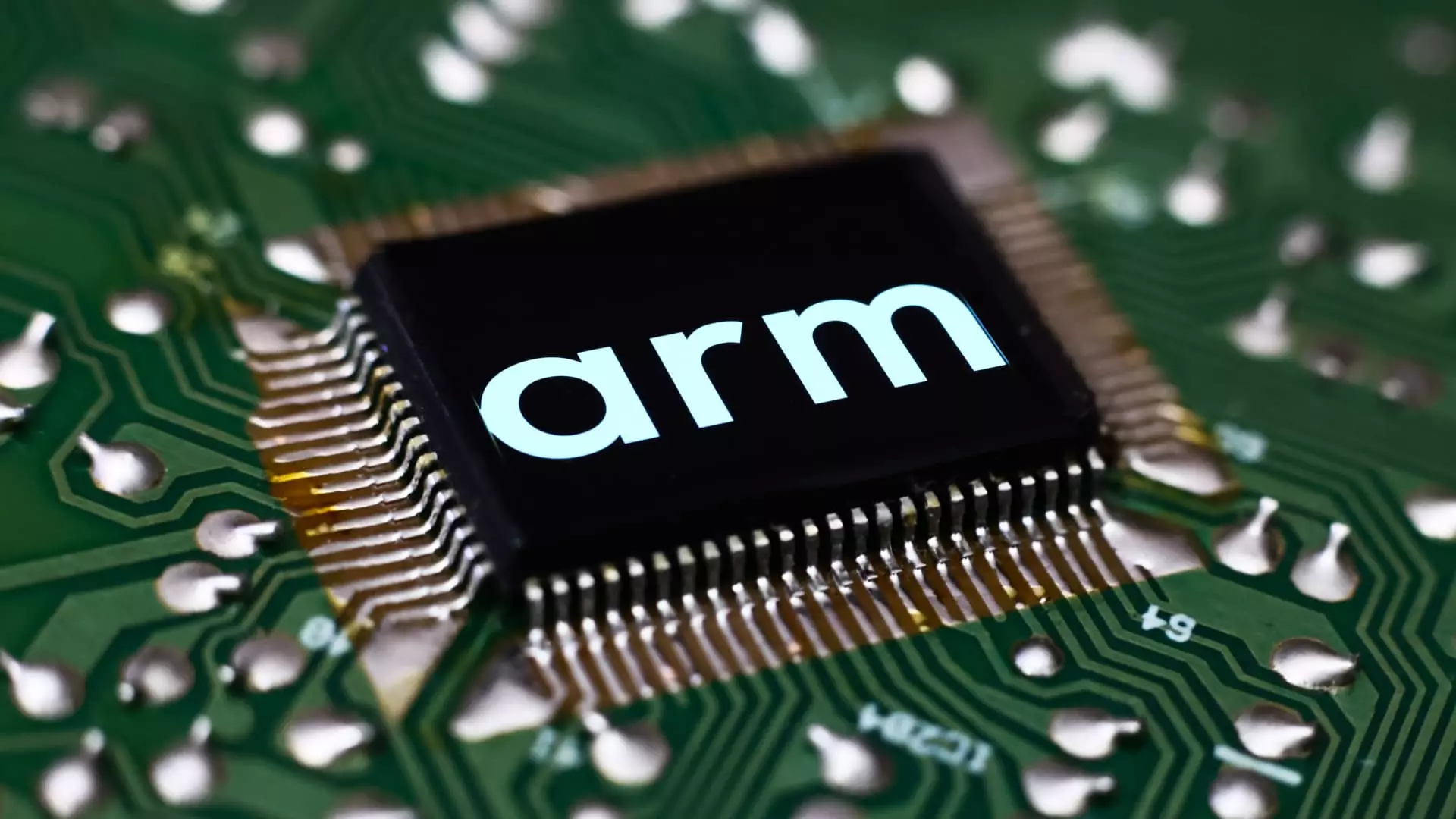Arm, the British chip designer, experienced a rollercoaster ride in the stock market with its shares closing down over 2% following the release of its fiscal fourth-quarter results. The company reported a significant 47% year-over-year rise in revenue, driven primarily by the demand for artificial intelligence applications. These robust sales were a result of high-value license agreements for AI chips and the increasing penetration of Arm’s Armv9-based chips, which offer higher margins. However, despite the positive quarterly results, Arm’s revenue guidance for fiscal 2025 fell short of investors’ expectations, leading to a decline in the stock price.
Analysts, including those from Citi led by Andrew Gardiner, acknowledged the strength of Arm’s licensing business as a positive indicator for future royalties. While Arm’s results for the fourth quarter exceeded expectations for the third consecutive quarter, the full-year revenue guidance midpoint was slightly below consensus estimates. Gardiner emphasized the importance of licensing upside, fueled by the increasing demand for AI solutions and the higher value offered by Arm’s v9 and Compute Subsystem solutions. This optimistic outlook on future royalties prompted analysts to maintain a buy rating on Arm’s stock.
Arm’s Role in the Semiconductor Industry
Arm is often referred to as the “Switzerland” of the semiconductor industry due to its unique business model. Unlike chipmakers like Nvidia that produce and sell their own products, Arm focuses on designing architectures for chips that are then licensed to companies such as Qualcomm and Nvidia. This licensing model allows Arm to charge royalty fees on every sale made by its partners. Despite being founded in Cambridge, England, in 1990, Arm has undergone significant ownership changes, with SoftBank acquiring it in 2016 for $32 billion.
Arm’s journey in the stock market has been eventful, with its shares soaring after being floated on the Nasdaq in September 2023. The stock price has more than doubled since its IPO, driven by the growing demand for chips capable of running advanced AI applications like ChatGPT. Arm’s market debut was one of the technology industry’s first high-profile initial public offerings following a slowdown in IPO activity in 2022. However, challenges emerged when U.S. tech giant Nvidia attempted to acquire Arm for $40 billion, facing regulatory hurdles over antitrust concerns.
Arm’s recent revenue guidance, while overshadowing strong quarterly results, reflects the challenges and opportunities facing the company in the competitive semiconductor industry. The positive outlook on future royalties driven by the demand for AI solutions and higher-value chip designs highlights the importance of Arm’s licensing business for sustained growth. As the company navigates through market uncertainties and regulatory complexities, investors will closely monitor Arm’s ability to capitalize on technological advancements and industry trends to drive stock performance.

Leave a Reply